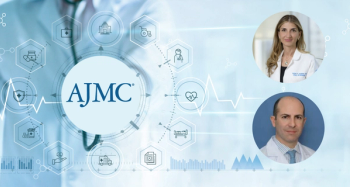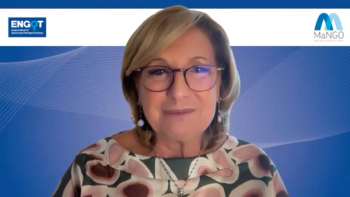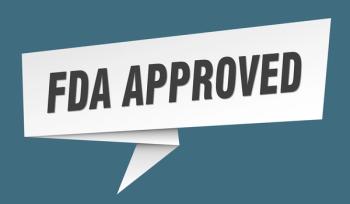
- April 2021
- Volume 27
- Issue 3
Conference Coverage: Association of Community Cancer Centers 2021
Geisinger’s “Soft Demo” Proves Key for a Successful Clinical Pathways Rollout
Clinical pathways in cancer care are beyond the “new” phase, but oncology practices and health systems are still learning all the ways they can bring greater standardization to care, eliminate unnecessary care, improve data collection, and drive value.
That’s what Mark Wojtowicz, MS, MBA, the administrative director for Oncology Research and Innovation at Geisinger Cancer Institute, Danville, Pennsylvania, shared during a session of the 47th Annual Meeting & Cancer Center Business Summit Association of Community Cancer Centers (ACCC), held March 1 to 5, 2021.
Geisinger implemented Elsevier’s ClinicalPath in medical and radiation oncology in April 2019, starting with a “soft demo” and a weeklong training process. The pathways product was rolled out at all sites a month later. The health system decided to integrate ClinicalPath into its Epic electronic health record (EHR) management system, because incorporation into the workflow was seen as critical to getting physicians to adopt pathways.
Pharmacists oversaw a process in which the pathway regimen library was “harmonized” with Epic, to systematically update new workflows in hematology and oncology. This was a key process, because Geisinger actively takes part in clinical trials.
“Accruing to clinical trials is an important part of what we do, and we know that it means a great deal that our clinicians have clinical trial information at that decision-making point,” Wojtowicz said. To have all options available when clinicians were talking to patients, “we wanted to implement across all these specialties, and we wanted to do it as rapidly as possible.”
“A lot of the credit goes to the team that really made that happen,” he said. The soft demo was key, Wojtowicz said. “Everybody was at the starting line, the tool was actually launched; it just wasn’t promoted to the broad practice that it was live and accessible.”
During this period, the physician champions worked with the pathways to achieve buy-in among the others—and allow time for adjustments and integrating with other workflows. A month later the new program was ready to go live. Over a week, the pathways team met with clinicians and let them try the pathways system to give them opportunities for training and practice. Wojtowicz shared a decision-tree slide that showed each step, starting with whether a diagnosis was or was not on a pathway. The mapping system was critical, he said.
“We know that clinical pathways oftentimes will not cover every single scenario that’s out there, or every decision that an oncologist needs to make. So, you have to be able to map that out—what’s that pathway look like? Or, what do those workflows look like when it’s a nonpathway related decision versus pathway related.”
This “visualization” process allowed the team, and by extension, physicians, the chance to think through what the workflow would look like and helped with implementation.
Integrating workflows in medical oncology with the EHR definitely presented some challenges, but physicians were determined to have one way to interact with the system. In the beginning, extra information had to be tailored and removed. “And that did require that [for] some regimens they had to differentiate, and we had to build new ones. But I think that was a worthwhile exercise, because everyone required consensus, discussion, and agreement around that direction.”
The final step was to ensure that the pathways were multidisciplinary—that physicians could work with a system that would allow transparency between medical and radiation oncology so that treatment options could be presented together to patients. “What worked for us was that the system allowed for this transfer of data,” so if a decision was made in medical oncology, it was shared with radiation oncology.
“That was a huge thing as far as workflow goes, because we really had to be prepared to have not only the individual clinician be able to handle the workflow, but then you kind of get to that next level where its, “How about the multidisciplinary workflow?’” he said. “You’ve got to make it simpler for, for those things to happen.”
The next step is to make use of new data on the pathway system that allows artificial intelligence to use predictive analytics to inform decision makers in the practice.
“It doesn’t really stop there,” he said. More value will come from investments health systems are making in predictive analytics. “We started bringing our clinical pathways decision data to the discrete elements that come out of that decision, we started bringing that into data tables, and linking it back with our clinical information to gain better insights about when decisions were made, and what’s happening after that.” This allows clinicians to decide what care plans should look like and how much monitoring should occur.
Geisinger also opted to include prognostic questions. Tough as it is, physicians are asked if they would be surprised if the patient were to die in the next year. The answer helps drive more palliative care referrals.
The health system is cognizant that it is asking doctors to take time to gather
data, to add clicks to their day, Wojtowicz said. Adoption rates have been good,
and the process continues to improve.
From the health system’s perspective, “they’re extracting data in discrete fashion, and merging it back with some of our clinical data to make the most out of it.”
Integrating Remote Symptom Management With ePROs in Cancer Care
Both cancer and its treatments are highly symptomatic, making it difficult at times for clinicians to closely monitor every symptom a patient experiences outside of the office walls. But advances in technology are making It easier to use patient-reported outcomes (PROs) as a tool for remote symptom management (RSM). A presentation at the ACCC 47th Annual Meeting & Cancer Center Business Summit titled “The Role of Remote Cancer Symptom Management in an E volving Reimbursement Landscape” gave virtual attendees an overview of the latest research on PROs and how RSM can be incorporated into an oncology practice.
The discussion began with a presentation from Ethan Basch, MD, MSc, director of the Cancer Outcomes Research Program at University of North Carolina (UNC) Lineberger Comprehensive Cancer Center, chief of the Division of Oncology and physician-in-chief at N.C. Cancer Hospital, and professor of health policy and management at the UNC Gillings School of Global Public Health. The panel also included Nadia Still, DNP, RN, senior director of client services at Carevive Systems, Inc; Madelyn Trupkin Herzfeld, co-founder and vice chair of Carevive; and Bruno Lempernesse, chief executive officer of Carevive.
“A mainstay of quality cancer care is symptom management. It’s core to what we do because cancer is so symptomatic, and our treatments are highly symptomatic, as well,” said Basch. “And early in my career, I began to observe that, unfortunately, we often miss symptoms that patients may be experiencing that emerge later on. We realized that really, they were presenting themselves much earlier—but they evaded our notice.”
This realization led him and his research group to conduct early studies on whether utilizing PROs and clinician reporting simultaneously would reveal gaps in reported symptoms. They found that there were significant differences between the incidence of symptoms reported by patients vs clinicians, with symptoms underreported by clinicians compared with PROs. “This is a missed opportunity to catch symptoms early to intervene and to improve the patient experience and potentially to avoid downstream complications,” Basch said.
Basch highlighted electronic patient-reported outcome (ePRO) systems as one way to implement patient reporting and symptom management. Patients self-report symptoms with the system, whether through a web interface, smartphone, or an automated telephone questionnaire. He noted that a traditional telephone system is most accessible to patients, especially in community practices and rural areas. The system can automatically reply with information on how to self-manage the symptoms while conveying the information to providers and electronic health records.
Providing multiple interface options for patients and preset reminders for them to input their surveys are 2 key best practices that can help ensure adherence on the patients’ end, Basch said.
One randomized controlled trial from Basch’s research group found that compared to standard care, patients utilizing ePRO were 7% less likely to visit the emergency department.1 Median survival was also 5.2 months longer among patients in the self-reporting arm of the study. “In this study and in other studies, patients have been able to stay on chemotherapy longer when using this kind of ePRO intervention,” Basch added. Better quality of life and functionality was also seen in those patients.
Basch noted that patients have generally reported satisfaction with ePRO systems, and so have nurses. He cautioned that it does increase upfront work for nurses but will save work down the line if fewer patients have hospital visits thanks to the systems. Therefore, workflow accommodation should be planned, and clinics must be prepared ahead of beginning to utilize ePROs. Introducing patients to ePRO systems can be quick, Still explained during her presentation. In the case of Carevive PROmpt, for example, a physician could introduce the concept to patients before a nonclinical role such as a patient navigator explains the system to the patient in more depth. By the next week, patients should be comfortable completing weekly surveys from home.
Based on their survey responses, the system responds with a self-management plan
that includes evidence-based methods to manage their symptoms. Where provider notifications are concerned, practitioners can set the threshold to avoid being bogged down with alerts.
Herzfeld discussed reimbursement, highlighting reimbursement codes that were created specifically to address the boom in telehealth over the pandemic. Some examples she provided were codes for e-visits, which are set up by providers to address situations where a clinic visit is not necessary; codes for virtual check-ins initiated by the patient; the Principal Care Management code, which is for comprehensive care management for a single, high-risk disease lasting more than 3 months; and reimbursement for remote monitoring with an FDA-approved device such as a fitness tracker.
RSM is something that may be included as a required enhanced patient service in the upcoming Oncology Care First model, which is expected to begin in June 2022, Herzfeld pointed out. For physicians who plan on participating, it would be a good idea to become accustomed to utilizing ePROs beforehand, she said.
Finally, Lempernesse touched on the importance of patient experience data (PED), which include disease symptoms, the impact on quality of life, experience with treatments, input on the outcomes most important to them, and the relative importance of any given issue to each patient. Use of ePROs provides a full picture of the patient experience, he said.
“So if we look at the implications for the future of cancer care with these data, what do we see? Well, today there’s already several applications and benefits to using this kind of data in cancer care,” Lempernesse said. “These data empower patients as an active stakeholder, with more engagement in their treatment and disease. From the clinician standpoint, the use of data
and patient-reported outcomes improves patient-provider communication, informs treatment and symptom pathways, increases vigilance and real-time actions with alerts, and finally, supports personalized care.”
Reference
1. Basch E, Deal AM, Dueck AC, at al. Overall survival results of a trial assessing patient-reported outcomes for symptom monitoring during routine cancer treatment. JAMA. 2017;318(2):197-198. doi:10.1001/jama.2017.7156
Better Phone Call Triage Leads to Faster Decision-Making
Texas Oncology's quest to reduce hospitalizations and emergency department (ED) visits through value-based care started with a simple question: can do we a better job with patient phone calls?
Lalan Wilfong, MD, executive vice president of Value-Based Care and Quality Programs, described Texas Oncology’s challenge during the 47th Annual Meeting & Cancer Center Business Summit Association of Community Cancer Centers. Five years ago, when the 200-site community oncology network decided to take part in CMS’ Oncology Care Model, it had to step back and look at areas where patient experience fell short.
A top complaint: when patients called during business hours, it took too long for someone to get back to them. Patients would leave voicemails, and there was no system to track who picked up the voicemail or when.
“We didn’t have any insight at all about that,” Wilfong said. “What are nurses
doing during the day? How are we holding them accountable for callback times?”
Studies were also showing the benefits of electronic patient reported
outcomes, or ePROs. Texas Oncology physicians asked they could incorporate
these new findings into patient care. “How can we understand patients who are
calling in with symptoms, and how do we make sure we’re responding appropriately?”
Wilfong asked.
The idea was to create operational efficiency to improve triage, better
manage patient symptoms, and reduce ED visits and hospitalizations. In July
2019, Texas Oncology selected the Navigating Cancer management solution
system to help the network cut down the time it takes to resolve patient phone
calls while also collecting feedback.
Launching the system required Texas Oncology physicians to study how
patient calling patterns, whether they spoke with a nurse, and what kind of
training that person had received. Doctors examined call volume levels at
different sites across the network. The result, Wilfong said, is a new system with
the following steps:
- Patients report symptoms to a centralized system operator
- The operator manually adds the patient’s report to the triage workboard
- A triage nurse provides symptom management and resolves remotely,
with instructions sent directly to the patient.
Wilfong said the new system has cut down incident resolution time by 33%. The Navigating Cancer pathways are a key step in the process, he said. The operator who takes patient calls uses them to log information into the dashboard, and, ultimately, to send care instructions home to the patient.
The improved resolution time has happened despite a 35% uptick in call volume in the second half of 2020, most of which is due to COVID-19. “Our nurses are becoming faster at taking care of patients,” he said. “What’s really impressive is that 60% of these incidents are resolved in less than an hour, which is fantastic. We’re having better, more proactive, timely symptom management with this process.”
Articles in this issue
over 4 years ago
Path to Better Payment System to Be Clear Over Timeover 4 years ago
AJMCtv Interviews: April 2021Newsletter
Stay ahead of policy, cost, and value—subscribe to AJMC for expert insights at the intersection of clinical care and health economics.









































